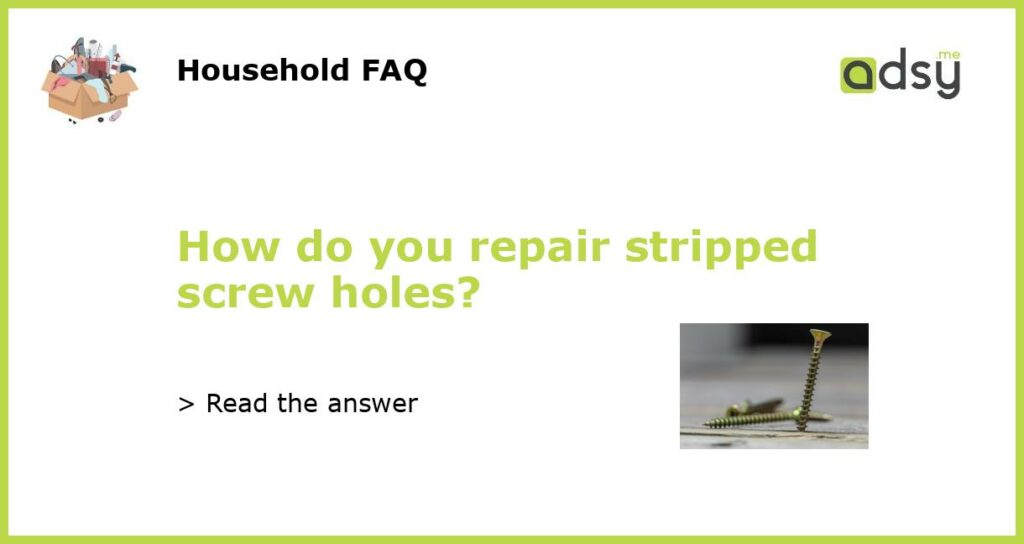What causes stripped screw holes?
Before we dive into the solutions for repairing stripped screw holes, let’s first understand what causes this issue in the first place. There are a few common reasons why screw holes can become stripped:
- Poor screw quality: Low-quality screws can easily strip the wood or material they are being screwed into.
- Incorrect screw size: Using a screw that is too large or too small for the hole can cause the hole to become stripped.
- Repetitive screwing and unscrewing: Over time, screws can loosen and weaken the surrounding material, leading to stripped holes.
- Using the wrong type of screwdriver or drill bit: If the screwdriver or drill bit is not the right size or type for the screw, it can damage the screw hole.
Determine the extent of the damage
Once you’ve identified that you have a stripped screw hole, the next step is to assess the extent of the damage. Is the hole partially stripped, or is the entire hole completely unusable? This will help determine the best approach for repairing the stripped screw hole.
Solutions for repairing stripped screw holes
Depending on the severity of the stripped screw hole, there are several solutions you can try:
a) Toothpick or wooden matchstick method
If the hole is only partially stripped, you can try using toothpicks or wooden matchsticks to fill the hole and provide a new grip for the screw. Here’s how to do it:
- Apply some wood glue to the toothpicks or matchsticks.
- Insert them into the stripped hole, making sure they are tightly packed.
- Once the glue dries, break off the excess toothpicks or matchsticks.
- Now the hole is ready for the screw to be inserted.
b) Use a larger screw or a screw with a different thread type
If the stripped hole is only slightly larger than the screw, you can try using a slightly larger screw. Another option is to use a screw with a different thread type, such as a coarse thread instead of a fine thread. The larger or different screw can create new threads and hold securely in the material without the need for any additional repairs.
c) Insert a plug
If the stripped hole is too large to be fixed with toothpicks or a larger screw, you can insert a plug made from the same material as the surrounding material. Here’s what you need to do:
- Drill out the stripped hole to a slightly larger size.
- Create a plug using a dowel or a wooden rod of the same material.
- Apply some wood glue to the plug and insert it into the hole.
- Trim off any excess plug material.
- Once the glue is dry, drill a pilot hole in the plug and reinsert the screw.
d) Utilize a screw thread repair kit
If the stripped screw hole is severely damaged or none of the previous methods work, you can use a screw thread repair kit. These kits typically include threaded inserts that can be inserted into the stripped hole to provide new threads for the screw. Follow the instructions provided with the kit to properly repair the stripped hole.
Preventing stripped screw holes in the future
To avoid dealing with stripped screw holes in the future, here are some preventative measures you can take:
- Invest in high-quality screws that are appropriate for the material you are working with.
- Use the correct size and type of screwdriver or drill bit for the screw.
- Pre-drill pilot holes before inserting screws, especially in hardwood or dense materials.
- Consider using alternative fasteners such as anchoring systems or threaded inserts for heavy-duty applications.
Conclusion
Repairing stripped screw holes is a common DIY challenge, but with the right knowledge and techniques, it can be easily overcome. Whether you choose to use toothpicks, a larger screw, plugs, or a screw thread repair kit, the trick is to select the method that best suits the severity of the stripped hole. By taking preventive measures, you can also minimize the likelihood of encountering stripped screw holes in the future.






